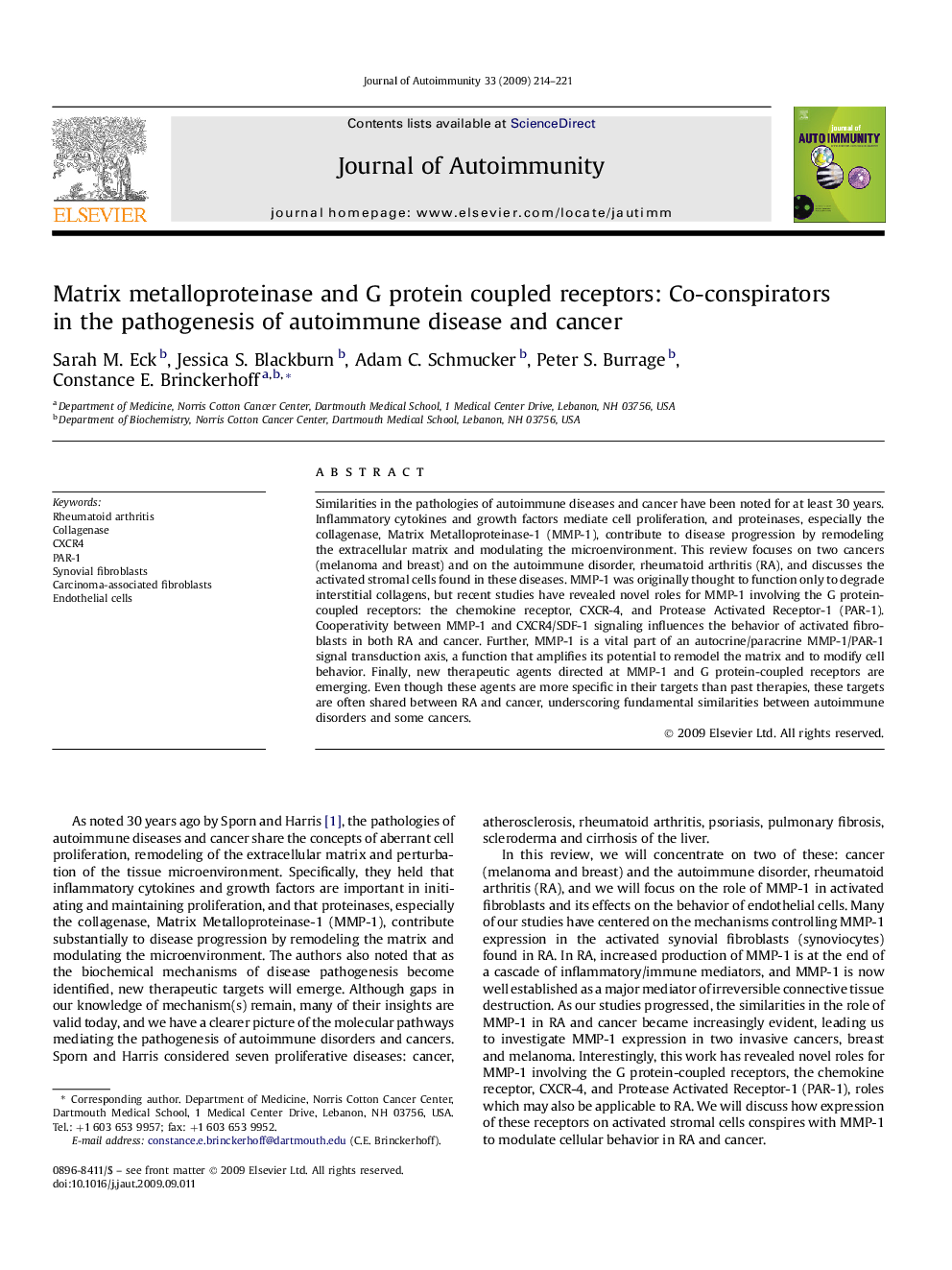| Article ID | Journal | Published Year | Pages | File Type |
|---|---|---|---|---|
| 3368206 | Journal of Autoimmunity | 2009 | 8 Pages |
Similarities in the pathologies of autoimmune diseases and cancer have been noted for at least 30 years. Inflammatory cytokines and growth factors mediate cell proliferation, and proteinases, especially the collagenase, Matrix Metalloproteinase-1 (MMP-1), contribute to disease progression by remodeling the extracellular matrix and modulating the microenvironment. This review focuses on two cancers (melanoma and breast) and on the autoimmune disorder, rheumatoid arthritis (RA), and discusses the activated stromal cells found in these diseases. MMP-1 was originally thought to function only to degrade interstitial collagens, but recent studies have revealed novel roles for MMP-1 involving the G protein-coupled receptors: the chemokine receptor, CXCR-4, and Protease Activated Receptor-1 (PAR-1). Cooperativity between MMP-1 and CXCR4/SDF-1 signaling influences the behavior of activated fibroblasts in both RA and cancer. Further, MMP-1 is a vital part of an autocrine/paracrine MMP-1/PAR-1 signal transduction axis, a function that amplifies its potential to remodel the matrix and to modify cell behavior. Finally, new therapeutic agents directed at MMP-1 and G protein-coupled receptors are emerging. Even though these agents are more specific in their targets than past therapies, these targets are often shared between RA and cancer, underscoring fundamental similarities between autoimmune disorders and some cancers.
